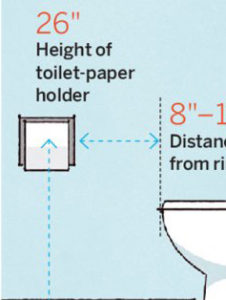How to Childproof Your Kitchen in 5 Steps

It’s so cute when your kids want to “help” around the kitchen … until you realize their version of help means they pull out every pot, pan and mixing bowl for use as a makeshift drum set. Child-led kitchen exploration not only thwarts your dinner-cooking efficiency but is rife with potential dangers, too: Piping-hot stovetops, sharp knives and untethered furniture are a recipe for disaster. Keep your little ones safe (and your cooking on track!) by following these childproofing tips.
1. Think high and low.
The first line of defense is moving hazards up, up, and away, says certified professional organizer Liz Jenkins, owner of Nashville’s A Fresh Space. Jenkins recommends keeping knives in a locked upper cabinet or an in-drawer knife block. Sharp cooking tools, plastic wrap and plastic-wrap boxes, should go in upper cabinets, as should glass bowls, cleaning supplies and plastic bags (which could suffocate a small child).
2. Lock it down.
Locking lower cabinets and drawers is Childproofing 101. Opt for internal locking systems rather than those that hang on the outside. “Outside latches can’t be used with single-pull cabinets, and parents often don’t tighten them enough or remember to put them back on,” says advanced certified professional childproofer Jay Martel, founder and owner of the Child Proof Coach.
3. Secure appliances.
While experts recommend using dishwasher latches, oven locks, knob covers and stove guards, they’re also just as quick to say that childproofing kitchen appliances often boils down to common sense. “Dishwashers can be tough to latch because of the way they open,” says Buck Bowhall, owner of Safe Baby, a Nashville childproofing-service company. “So I steer parents toward handwashing sharp knives or running the dishwasher after the kids go to bed.” Prevent curious tots from grabbing pots off the stove by turning handles in and cooking on back burners. Lastly, familiarize yourself with your appliances. “Appliances with keypads often have locking mechanisms that you activate by holding down one or two buttons,” Bowhall says. This feature is especially helpful if your kitchen is outfitted with below-counter-height appliances.
4. Check the furniture.
Secure any freestanding furniture—shelves, hutches, carts—to walls using furniture-tipping restraints. Check to make sure your slide-in or freestanding kitchen range was installed with an anti-tip device.
5. Redirect their energy.
Instead of constantly yelling, “No, no, no! We don’t touch that!” steer kids to what they can touch. Put a sturdy stool at the foot of the sink so they can wash their hands (they don’t even need to be tall enough to reach the handles if you’ve got a touch faucet), and consider giving them a cabinet to call their own.



